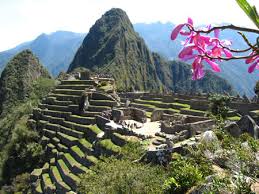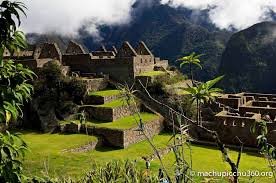Machu Picchu or Old Peak and Hoaynawhich, New Peak, overlooks the Urabumba River Canyon. About 43 miles from Cuzco, capital of the Incan Civilization, is the home of legends. In July 1911 Martain Bingham, with a topographer, biographer, and geology engineers found Machu Picchu. To this day the stones are fit together so tightly you’d have a hard time getting even a thin knife between them.The history of Machu Picchu is complex and fascinating, and before you arrive at the Lost City of the Incas, you might be interested in learning about it. This site is not only an impressive remnant of the Inca civilization; it is also one of the world’s most important archeological sites. It should come as no surprise how many travelers plan hiking tours to reach the lost city, but how many of them know what they’re looking at? A little background can go a long way to enhancing your visit to Machu Picchu.
An American professor named Hiram Bingham found the site despite the fact that the Incans did a thorough job at keeping secret the lost city, which is located nearly 8,000 feet above sea level. Once this discovery occurred, a wealth of information about the history of Machu Picchu was uncovered. There were 135 skeletons that were found at the site, and more than 100 were women.
Archaeologists have speculated that Machu Picchu was a temple or sanctuary for high priests and women who have been referred to as Virgins of the Sun, though more recent research hasconvinced many that it was built as an estate for the Incan emperor Pachacuti, who ruled from 1438 until 1471 or 1472.There are many intriguing aspects of the history of Machu Picchu, with one of the most fascinating being the relatively small period of its use.
This intricate and beautiful complex was built at the height of the Inca Empire, but it was in use for less than 100 years-around the time of the Spanish conquest of Peru, in the early sixteenth century, Machu Picchu was abandoned. After its rediscovery, it was named a UNESCO World HeritageSite in 1983, and the visitors have not stopped arriving since, as the iconic peaks of Machu Picchu are among the most dazzling archaeological sites worldwide. Archaeologists have divided all the sections of the site into three categories: religious, agricultural, and urban.
Another interesting historical fact that perhaps saved important details about the Inca civilization is the fact that the Spanish conquerors never found Machu Picchu. While the Spanish were responsible for plundering many other Incan sites, this most sacred site remained a secret. Over the course of centuries, much of the site became overgrown.While it was known by thelocal people, it wasn’t discovered for the rest of the world until 1911 when an 11-year-old boy led Professor Bingham to the site.





